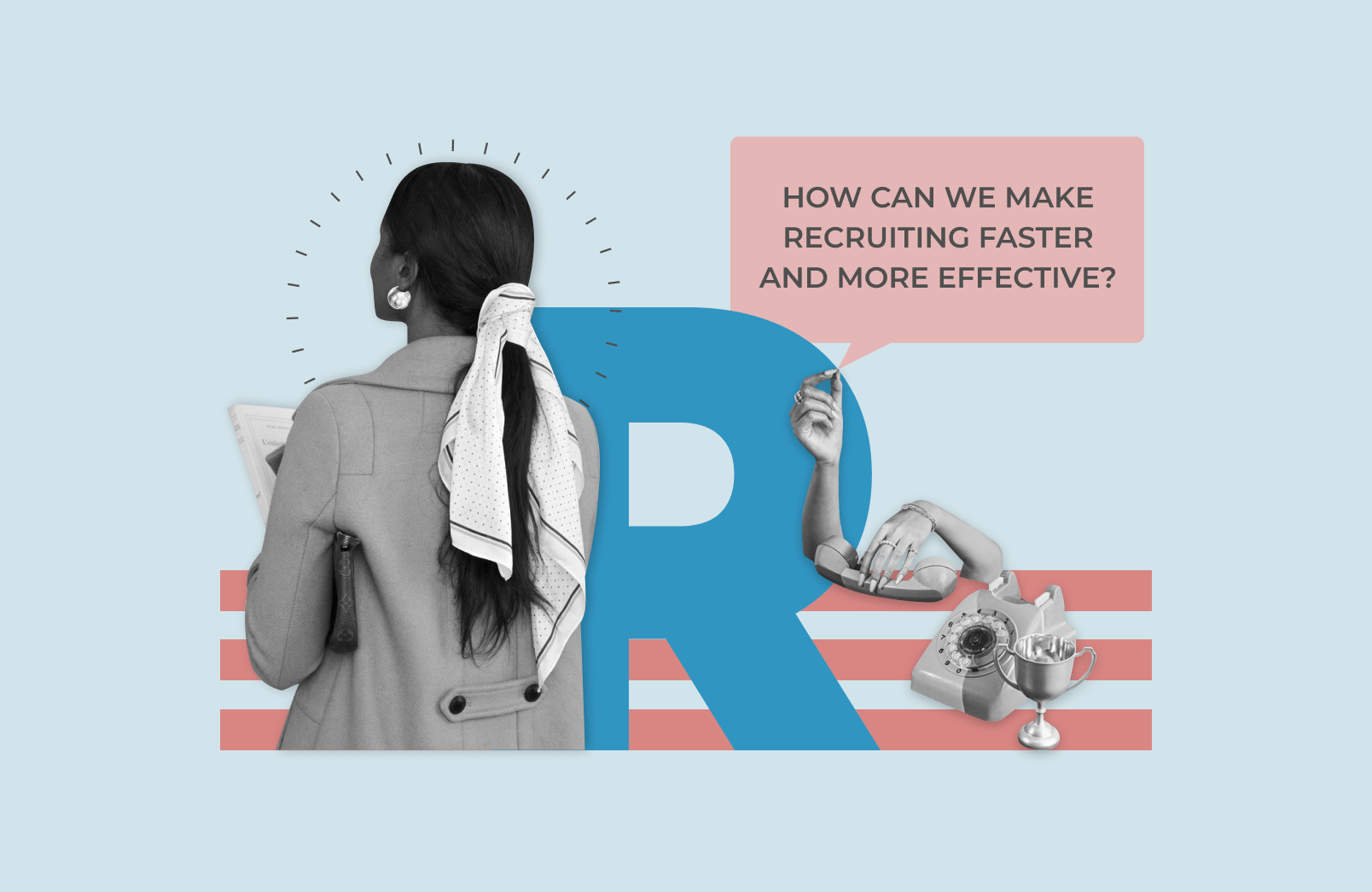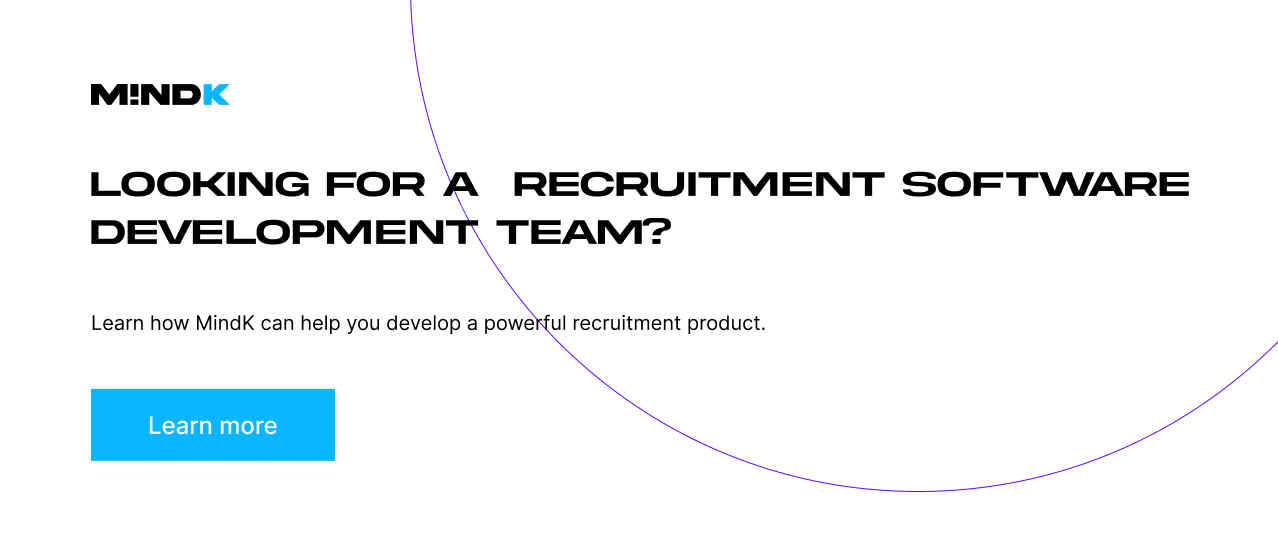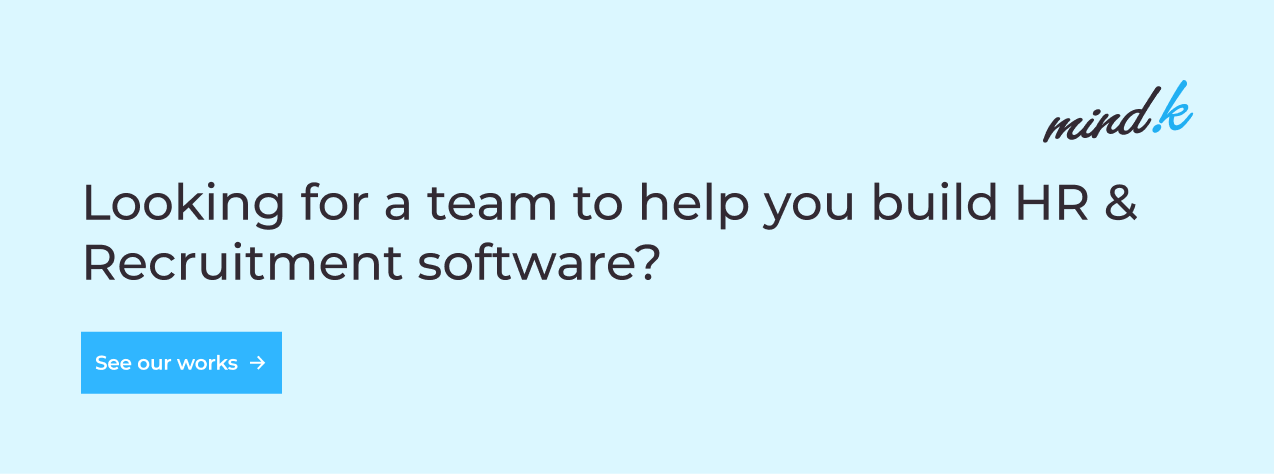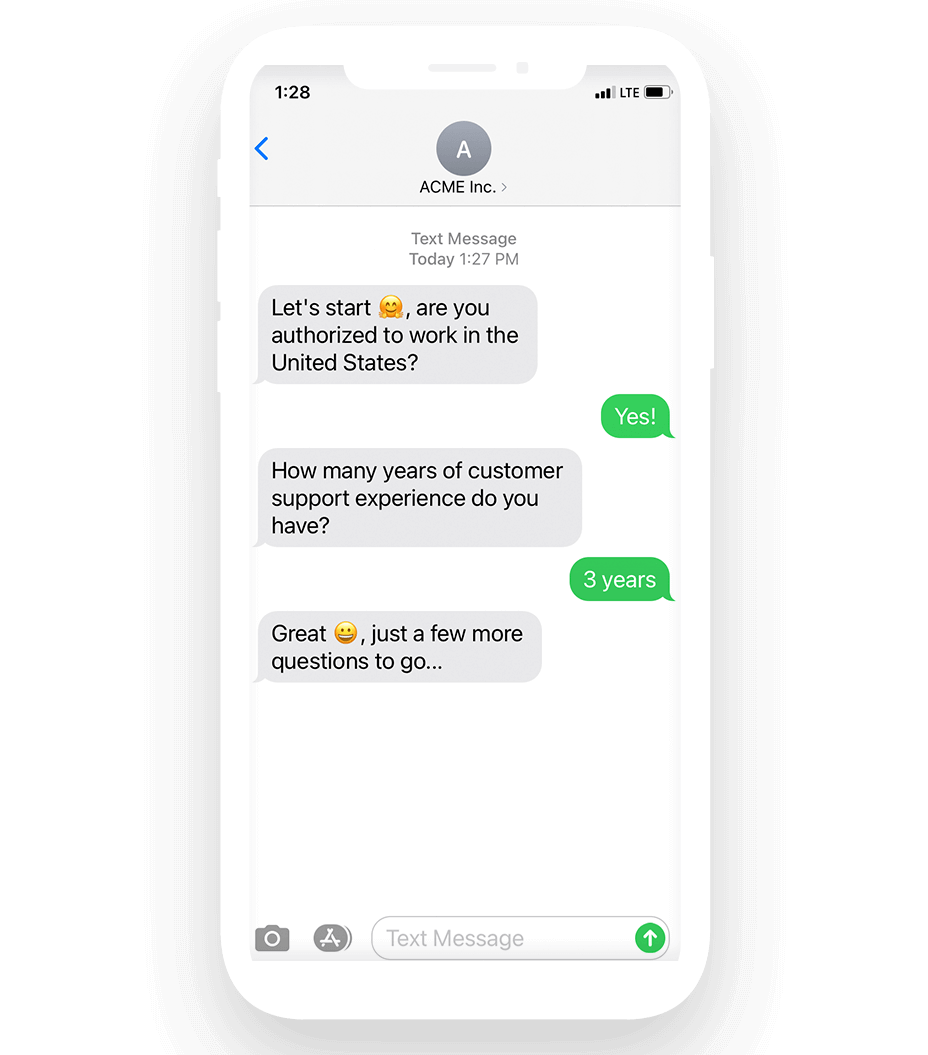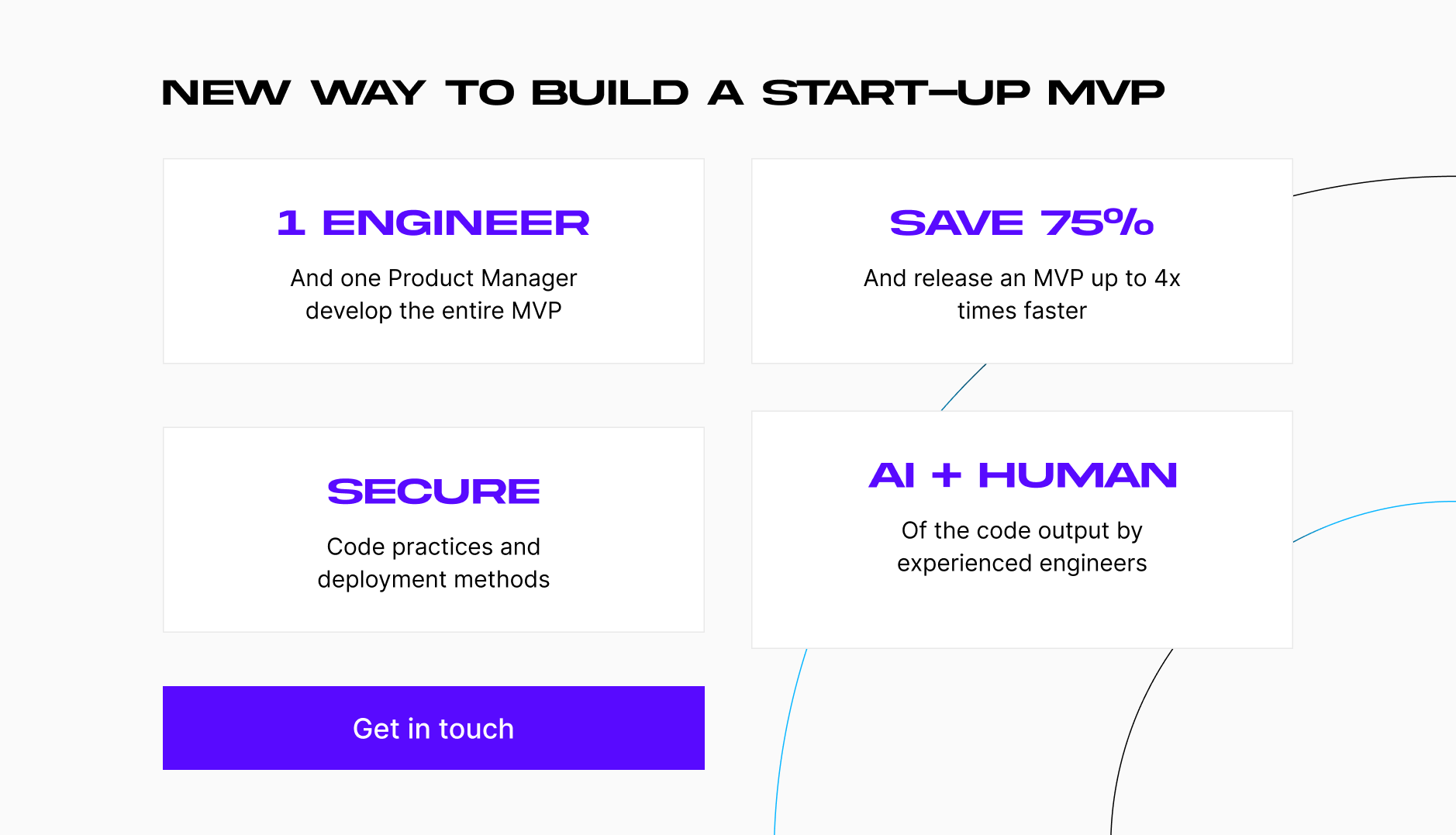Recruiters are almost always rated based on two measurements: time to hire and quality of recruitment. That’s why more and more recruiting specialists are asking themselves, “How can we make recruiting faster and more effective?”. Here at MindK, we believe that AI is part of the answer.
We implemented AI-powered mechanisms when developing custom recruitment solutions for our clients. In this article, we’ll explain how AI can help solve the biggest problem of talent acquisition, how AI resume screening technology works under the hood, and how can you leverage it in your own SaaS products.
But first things first – why resume screening is so challenging?
The main challenges of resume screening worth solving
Resume screening is a foundational stone of HR process automation. When we talk about resume or candidate screening we mean the process of assessing the information about a candidate like education, skills, experience, and personality to assume whether the job applicant is a good fit for a particular position.
Being one of the crucial steps in the hiring process, resume screening happens after the job offer is posted and comes before the interview. If you think the process is pretty simple, that’s not the case. There are three main challenges associated with resume screening:
Application volume
Research shows that human resource specialists attract on average of 250 applications for one common position. Only 12% of these applications fit the requirements for a job position. So: 88% of applications are considered unqualified.
Screening large volumes of applicants is one of the most monotonous and time-consuming parts of the hiring process. Thus, it’s very likely that recruiters may feel bored, make errors, miss information, or filter out qualified candidates based on unconscious bias.
- Quality of hire
Quality of hire is characterized by the value a new candidate can add to your company in the long term. It’s clear that quality of hire is considered one of the most important KPIs and demonstrates the value of the recruiting department to an organization.
There are a number of ways to measure the quality of hire, through the performance of new applicants, overall productivity, 360-degree feedback, and so on.
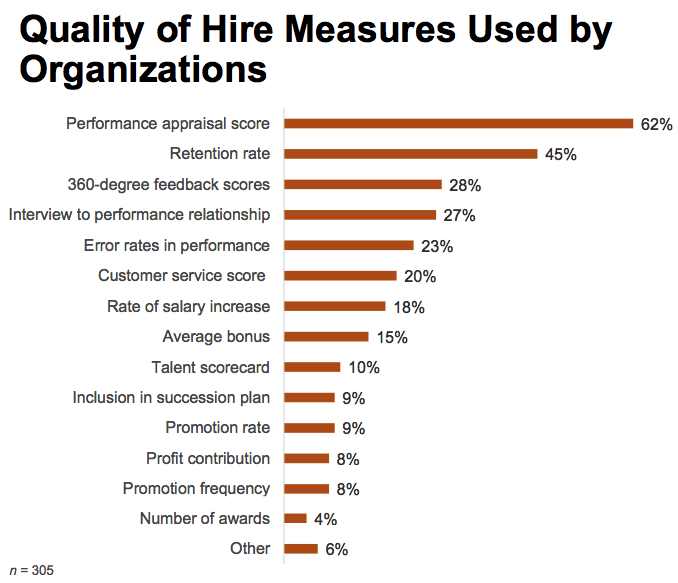
This is fine when you measure an employee, but how to ensure during the screening stage that a new applicant will bring value to the company? It’s the million-dollar question. There are tools able to help recruiters pre-qualify applicants, however, they won’t necessarily ensure the future success of the person in the position. Applicant Tracking Systems (ATS), for example, does not provide the possibility to assess quality of hire in advance which impedes companies from improving their screening workflows.
- Speed
If we know that an average position generates around 250 applications, it means the screening process may take up to 23 hours. And this is only for one hire. If a recruiter has several open positions, the process will be too slow to be effective.
60% of candidates admit they cancel the application when the process looks long-running, so imagine how many perfect candidates a company can lose. Think of organizations that hire within 24 hours. Such companies, as a rule, not only acquire the best candidates but also have quick access to the cream-of-the-crop in terms of hiring. This results from using different types of recruiting software, including resume screening tools.
How is resume screening using AI changing recruitment for the better?
Using AI technology for resume screening is focused on solving the main challenges we’ve discussed above, thus making the resume screening process less time-consuming, more intelligent, and effective. For this purpose, companies mostly use solutions called resume screening tools or resume parsers.
What is an AI-based resume parser?
As a rule, recruiters receive candidate CVs in PDF or Word formats. It is easy to read the information presented in this manner, however, it is quite difficult to manage, especially if the recruiter receives dozens of new resumes per day.
That is where the resume parsing tool comes into play. Resume parsing solutions frees the recruiter from time-intensive manual CV processing.
Resume parser is a tool powered by artificial intelligence that enables recognizing and extracting the necessary information from the CVs in different formats and presenting this data in an organized and understandable manner.
How does the resume parsing algorithm work?
The process starts with uploading all pertinent applicant resumes into the parsing tool. This can be done manually or automatically if the solution supports such functionality. After this, the parser runs through each document, extracts data relevant to both recruiter’s needs and the applications, including information about experience, skills, education, qualifications, and so on.
During the process, the resume parsing software red-pencils applicants with insufficient or no relevant information, and provides the recruiting specialists with a list of relevant applicants without the need to spend long hours screening each CV manually.
How resume parsers work
Source: thedigitalgroup.com
So, you may ask “Do all resume parsers work the same way?”. Yes and no. There may be some differences in how they extract the information from the resumes. Generally, there are a few resume parsers techniques available on the market today:
- Keyword-based resume parser detects certain keywords, phrases, and patterns in the text. Such a technique is the simplest, although less accurate. The accuracy rate is around 70% because of ambiguous keywords; the algorithm can not always catch the sense of the word and may misinterpret it.
- Grammar-based resume parser supports more comprehensive logic. It works from a list of predefined grammatical rules. The algorithm breaks down the text information in each CV, combining certain words and phrases to catch the meaning of each sentence. The accuracy of grammar-based resume parsers is close to 90% (by the way, human accuracy mostly doesn’t exceed 96%). In most cases, parsers are able to easily understand different meanings of words and phrases and lead to more detailed results.
- Statistical parsers are the most advanced technology. It applies numerical models to analyze the information in resumes. Aside from distinguishing the meanings of the words, it can recognize various structures including addresses, timelines, and such. For the statistical parser to be accurate it has to be previously “trained” on the data expected to process.
The latest intelligent resume parsing module we’ve delivered on our projects was a custom-made CV parsing based on integration with Textkernel, a third-party CV parsing tool. This is how it looks in practice – the recruiters upload a list of CVs from the applicants into the system. Then, thanks to integration with an external tool and pre-defined mechanisms, recruiters receive structured applicant profiles inside the system. As a result, talent acquisition specialists can easily find relevant candidates in seconds using an advanced search or intelligent auto-matching algorithm.
What are examples of AI-powered resume screening tools?
There is an abundance of AI screening tools on the market today. Most of them are multi-featured recruiting solutions that are enriched by the resume screening functionality.
For example, Arya, a recruiting SaaS solution, uses AI to quickly match open jobs to qualified candidates. It identifies relevant candidates based on data available inside the company’s internal database, and also from public resources like job boards, social platforms, and profiles available on the open web. Also, Arya claims to be able to predict whether a candidate is likely to quit the old job and take a new one.
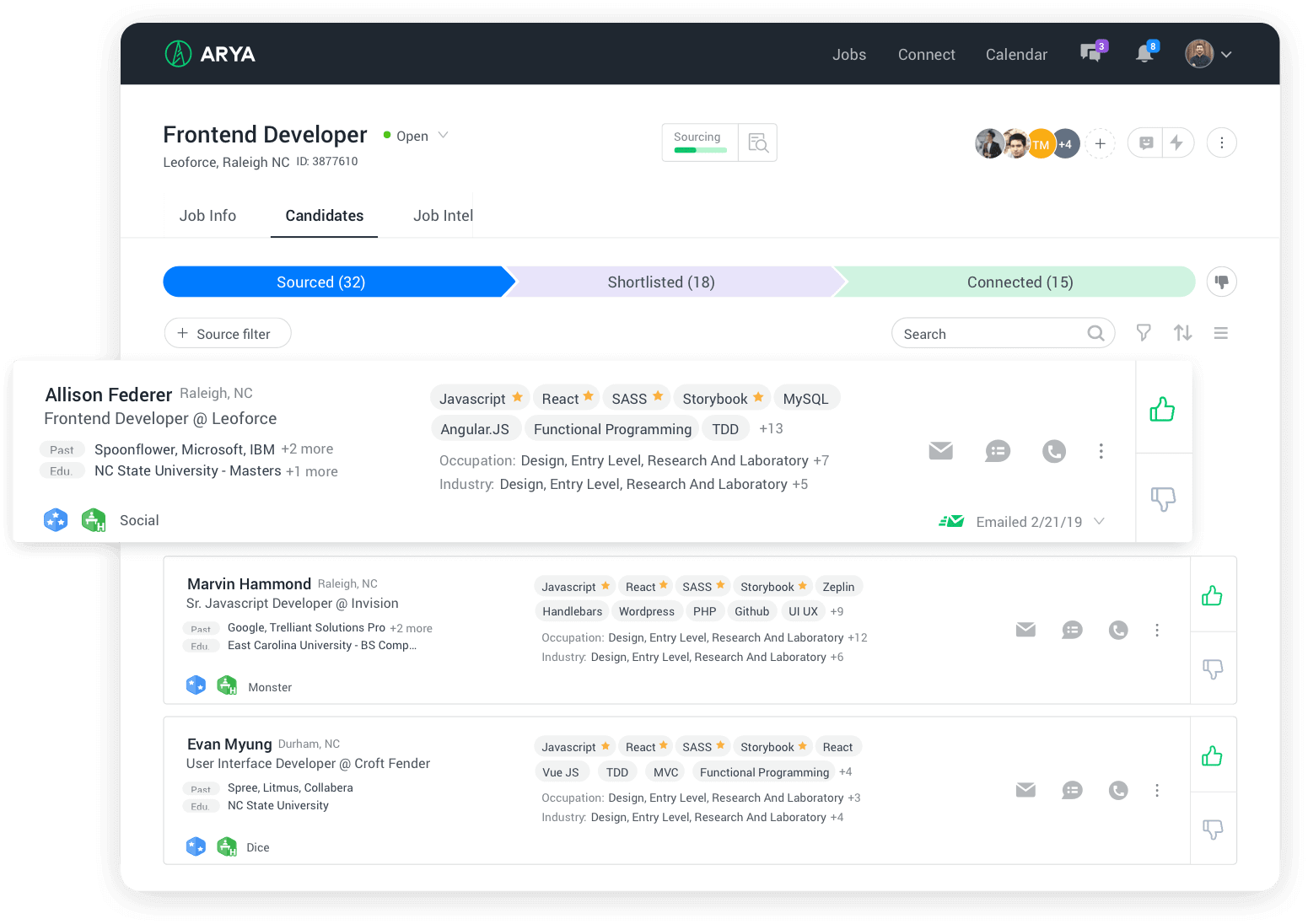
Source: goarya.com
Skeeled, a talent acquisition solution, uses artificial intelligence to not only screen resumes, but also provide a powerful ranking algorithm that allows it to deliver a shortlist based on qualification indicators. The system can also check custom criteria that the company requires like specific driver license type, work permit, or similar.
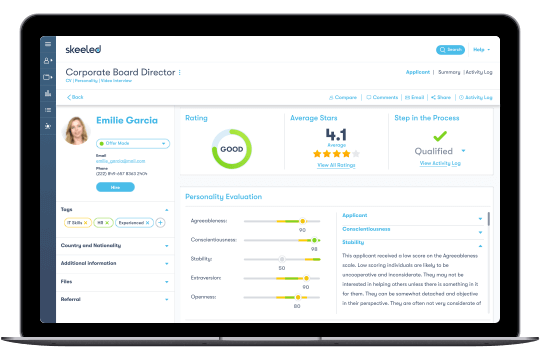
Source:skeeled.com
So, let’s sum up how AI-driven resume parsing tools can solve the main challenges of CV parsing:
- AI can rapidly process huge volumes of data, which makes it a most valuable tool for high-volume recruitment processes.
- Intelligent resume screening improves the quality of hire because it reduces human errors, unconscious bias and can make predictions. Ideal, a talent intelligence system, claims that organizations that apply AI automated recruiting have seen an increase in performance by 20% and turnover decrease by 35%.
- Automated screening saves the recruiter’s time, thus freeing more time and resources for other valuable activities like engaging with the best candidates, assessment, and so on.
Key problems when using resume parsers and how to solve them
Now, after we see the advantages AI-based parser can bring to the table, let’s find out what challenges you may face when applying resume parsers for screening CVs.
Challenge #1. Ambiguity of resume data
The majority of resume parsers available on the market are rule-based. It means that the language used in resumes contains a lot of ambiguity and variability. For example, there are different approaches to writing dates, and a lot of various job titles and skills that appear over and over again.
In view of this, with a rule-based resume parser you sooner or later risk facing two limitations:
- the rules may become too complex to be able to consider ambiguity and exceptions; and
- coverage might be limited.
So, what’s the solution? First of all, the only way the resume parsing tool can deal with ambiguity is to “understand” the context and relationships between words and phrases. In order to achieve this, try to mix different parsing techniques we’ve discussed, namely, keyword-based, grammar-based, and statistical-based parsing. This will help recruiters minimize false negative or false positive results while searching.
To solve this challenge on one of our projects mentioned, we created two types of search. The first was a basic search that searches based on just a keyword in all candidate’s profile fields. Another is an advanced search that allows searching data in numerous filters broken down by categories.
Another solution to improve the accuracy of resume parsing is to use additional types of resume screening solutions like recruiting chatbots and conversational AI. A recruiting chatbot provides a person with a multiple-choice response to its questions. Conversational AI is a more sophisticated form of a chatbot, as it uses advanced natural language processing (NLP) and machine learning (ML) to communicate like a human.
Example of the AI recruting chatbot by xor.ai
Using AI candidate screening by means of an enhanced chatbot allows obtaining as much information from the candidate as necessary, while resume parser works only with the data included in the resume.
Among the main tasks recruiting chatbot and conversational AI can help with is collecting data from the candidates, creating applicant profiles, screening, and scheduling interviews.
Challenge #2. Need to train CV parsers
Although CV parsing may look pretty straightforward in theory, it is not the case in practice. What separates a good CV parser from others is a commitment to continuous improvement.
If the AI-based resume parser is trained on a small amount of data, there is a risk that the parser will make errors when trying to understand the language it comes across. The larger data sets used to train the parsers, the higher the accuracy. Accuracy remains the key measure of parser effectiveness.
Thus, to reach the maximum accuracy, “train” the CV parsers on large data sets. Robert Ruff, CEO of parsing company Sovren, says that any evaluation of parsing software should include real-world tests. He is convinced that the only way to choose the parsing tool is your own trials. To select the best, take a number of resumes and try them on different parsing tools to see the result.
Challenge #3. Relying solely on resume data
Another challenge with resume parsers is connected with the limitations of available data. The parser assesses the candidate based only on the information presented in the resume. However, candidates may miss mentioning some valuable information about their skills or experience. The outcome is that qualified specialists are very often overlooked by CV parsing solutions.
There are also recruiting consultants and coaches who help candidates create a resume. They structure keywords so that the candidate’s CV successfully makes it through resume parsing solutions.
It all leads us to a foundational conclusion: resume parsers are a powerful part of any ATS able to significantly save the recruiters time and improve the quality of hire, but they should not be considered as the only tool for screening candidates.
Automate the resume screening process with MindK
MindK team has years of experience in recruitment software development. We’ve built different types of HR software for recruitment agencies, human resource teams, and innovative startups.
Aside from solving such urgent recruitment pain points as applicant tracking, interview scheduling, candidate assessment, HR analytics, and similar, we dealt with automating the candidate screening process.
We have the expertise in integrating Sovren and Textkernel parsing and matching tools with recruitment software. Our team has also built a skill clearance algorithm that automatically cleans your database from parsing errors. To see more of what we can offer, check our HR Software Development Services.
